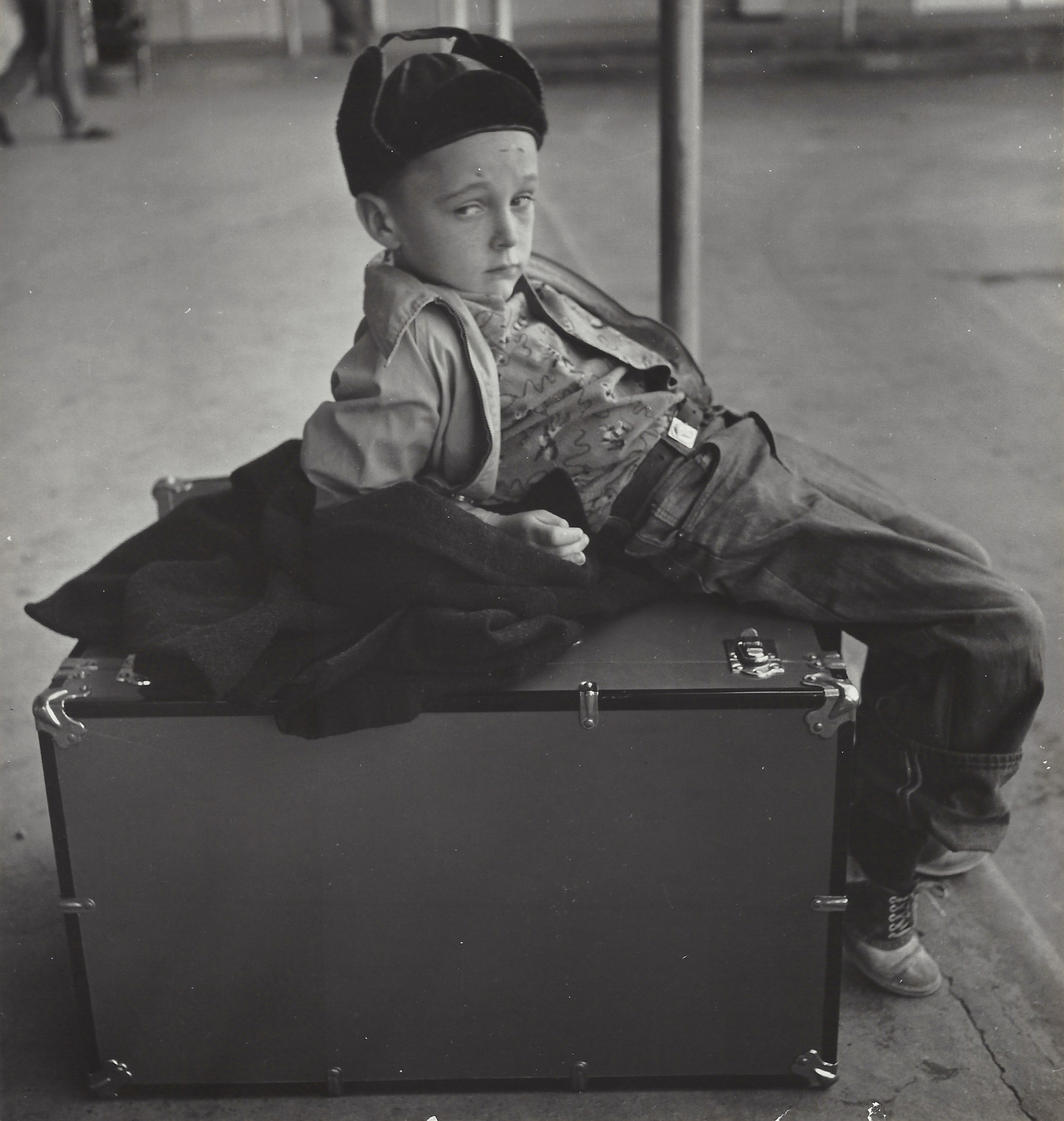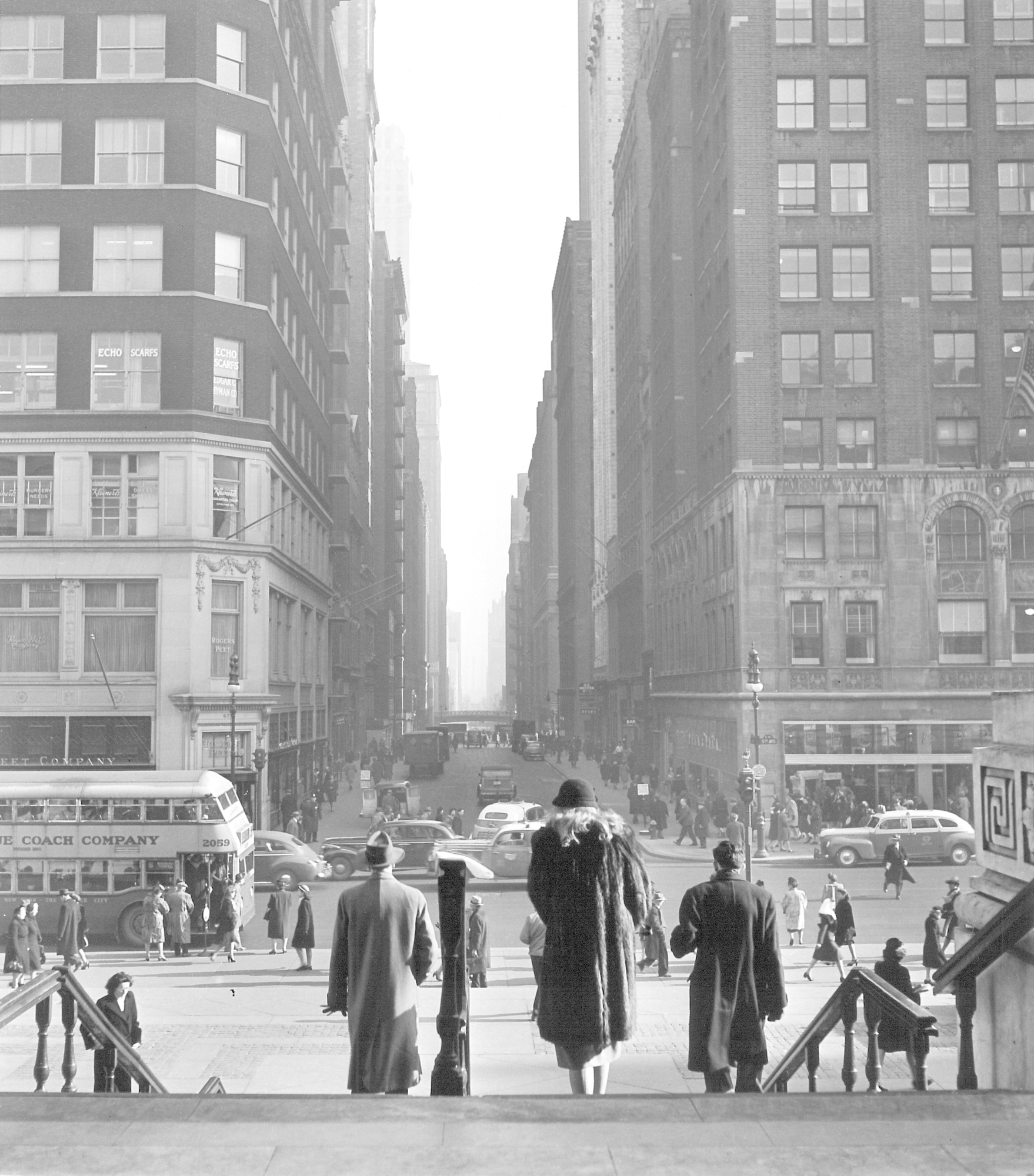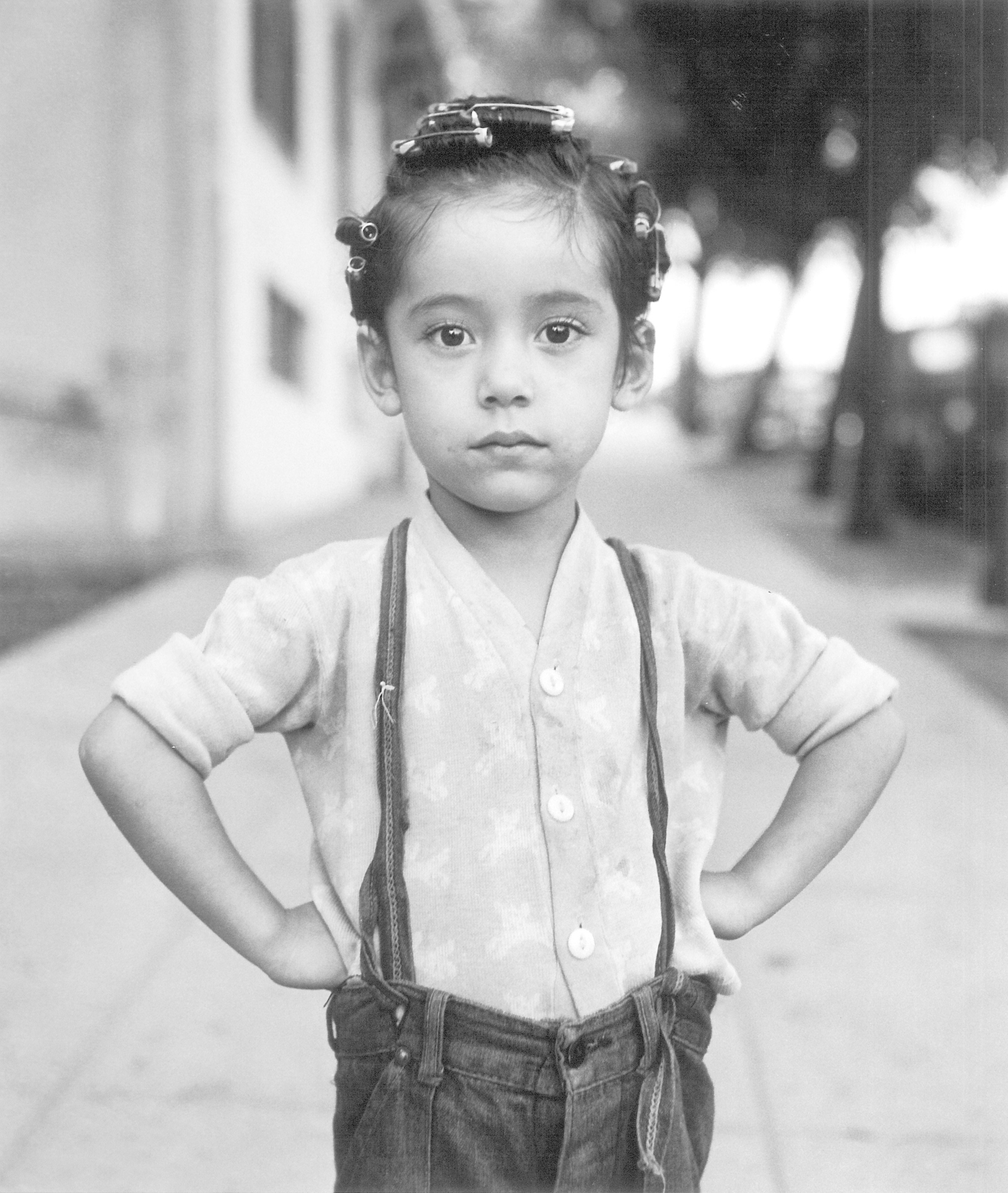REMEMBERING IDA WYMAN
A Pioneer of Early Street Photography
By Erika Suban
Street photography is not easy. First of all you have to be there, physically, at the right time, ready with the camera, bold enough to take the photo and skilled enough to really capture what you saw. Of course, you could be lucky and discover later that your camera saw something special you hadn’t even noticed. But you will certainly never be a street photographer if you are not a little curious, and have the courage to go out searching for something.
Ida Wyman, the American photographer and member of the Photo League who passed away on July 13th at the age of 93, certainly had curiosity, courage, skills and passion. And more, considering that she started her career in the 1940’s, when not too many women photographers were even taken in account.
The daughter of Jewish immigrants from Riga, Latvia, she was born March 7, 1926, in Malden, Massachusetts. She soon moved to New York, where her parents ran a small grocery store in the Bronx. “You can’t create what happens in the world, but sometimes you see it,” she used to say.
The Early Years
Her curiosity about people and how things work led her to receive her first camera at age fourteen and then join the Walton High School Camera Club. It was there that she met Life Magazine photographer Bernard Hoffman, who encouraged her to pursue a career in photography.
She became the first female photograph printer, and the only one at ACME (later UPI). Sadly, when men came back from the war, she lost her job. Instead of being dismayed by the situation, she took the opportunity to start her career as a professional photographer and her images were published in Life, Fortune, The Saturday Evening Post, Parade, and This Week.
After her marriage to another photographer, and with a family to raise, she became a scientific photographer at Columbia University’s department of pathology. But in the 1980’s, she returned to capturing regular people on the street, what she called “a special kind of happiness”. Melanie Herzog, art historian and co-author of the book “Ida Wyman: Chords of Memory” wrote: “While people within their social environment are most often the focus of Wyman’s photographs, she attended as well to details — architectural embellishments, commercial signs, utilitarian objects — that balance a composition, provide visual interest, and ground these images in their time and place.”
Ida’s Approach
Wyman often conceived of her photojournalistic projects as “picture stories” rather than as individual images. She envisioned the photographic process as a series of multiple photographs in order to achieve the project’s narrative function. And she would always ask permission before she photographed people.
“Unlike many street photographers,” explained the New York Times Martha Glowacki, discussing Wyman’s solo exhibition she curated at at the Watrous Gallery in Madison “she’d always introduce herself to her subjects and ask to take their photographs. If they said yes, she’d do it. She’d come and observe them again and again. She didn’t pose them. Because of that, she captured their genuine expressions. They weren’t looking furtively at her.”
She captured the people on the streets of New York, where she lived for most of her life, but she was also interested in exploring new places. She traveled often, photographed movie stars such as James Cagney, Elizabeth Taylor, Montgomery Clift, Ronald Reagan and Bonzo the chimpanzee. But when she was on assignment, she always found the time to go out on her own with her camera and see “real” people. From 1947 through 1951, Wyman completed nearly 100 assignments for Life. She traveled alone by bus from New York City to Mexico City, stopping along the way to see what was out there. “Wearing the camera trumped my shyness” she explained in her book Chords of Memory.
From her classic ‘Girl with Curlers’ on the street in LA staring at the viewer, to the delicate symmetrical composition of a group of businessmen reading a newspaper, Ida photographed what moved and inspired her. Those who had the opportunity to know her called her a force of nature and a brilliant artist, indomitable, kind and a little surprising at times. Even if she was not as famous as some of her contemporaries, Ida was an artist and a pioneer of early street photography.
Nowadays, in the Instagram era, everyone owns a camera or a cellphone and uses it regularly to document his or her life. But along with others like Ruth Orkin, Vivian Maier, Helen Levitt and Esther Bubley, she certainly influenced many other women to look at life through the camera’s lenses.
“I want the photo a certain synchrony of heart, eye and brain.” she stated on her website (http://www.idawyman.com/). And she achieved it.
Wyman’s work is in the Museum of Modern Art, International Center for Photography (ICP), the Jewish Museum (NYC), the New York Public Library Photography Collection, the Madison Museum of Contemporary Art and many private collections. Stephen Cohen in Los Angeles and Monroe Gallery in Santa Fe have represented Ida’s work for many years and her prints are available at Elizabeth Houston Gallery in New York.
©Ida Wyman/Courtesy Monroe Gallery of Photography
Men of the Garment District Read of President Roosevelt’s Death, NYC, 1945
Man Looking in Waste Basket, Coney Island, NY, 1945
The Ice Man, New York City , c1945
Sidewalk Clock, New York City, 1947
@Ida Wyman/Courtesy Elizabeth Houston Gallery
Girl with curlers, Los Angeles, c.1949
Boy Seated on Trunk, Houston, Texas, 1950
Looking East on 41st Street, New York City, 1947
James Cagney in White Heat, Los Angeles, 1949
Fairfax Avenue – 600 Block, Los Angeles,1950
Read the New York Times article on Ida Wyman.
Street photography can be a challenging medium, but once you get into a rhythm and lose the initial fears of approaching subjects, the results can be wonderful. Join Photo Workshop Adventures on trips where we spend time learning street photography techniques, such as Barcelona, Cuba, or Rajasthan. You’ll be channeling your inner Ida Wyman in no time.

















Fabulous blog post. One of my favorites so far! Great job 😎